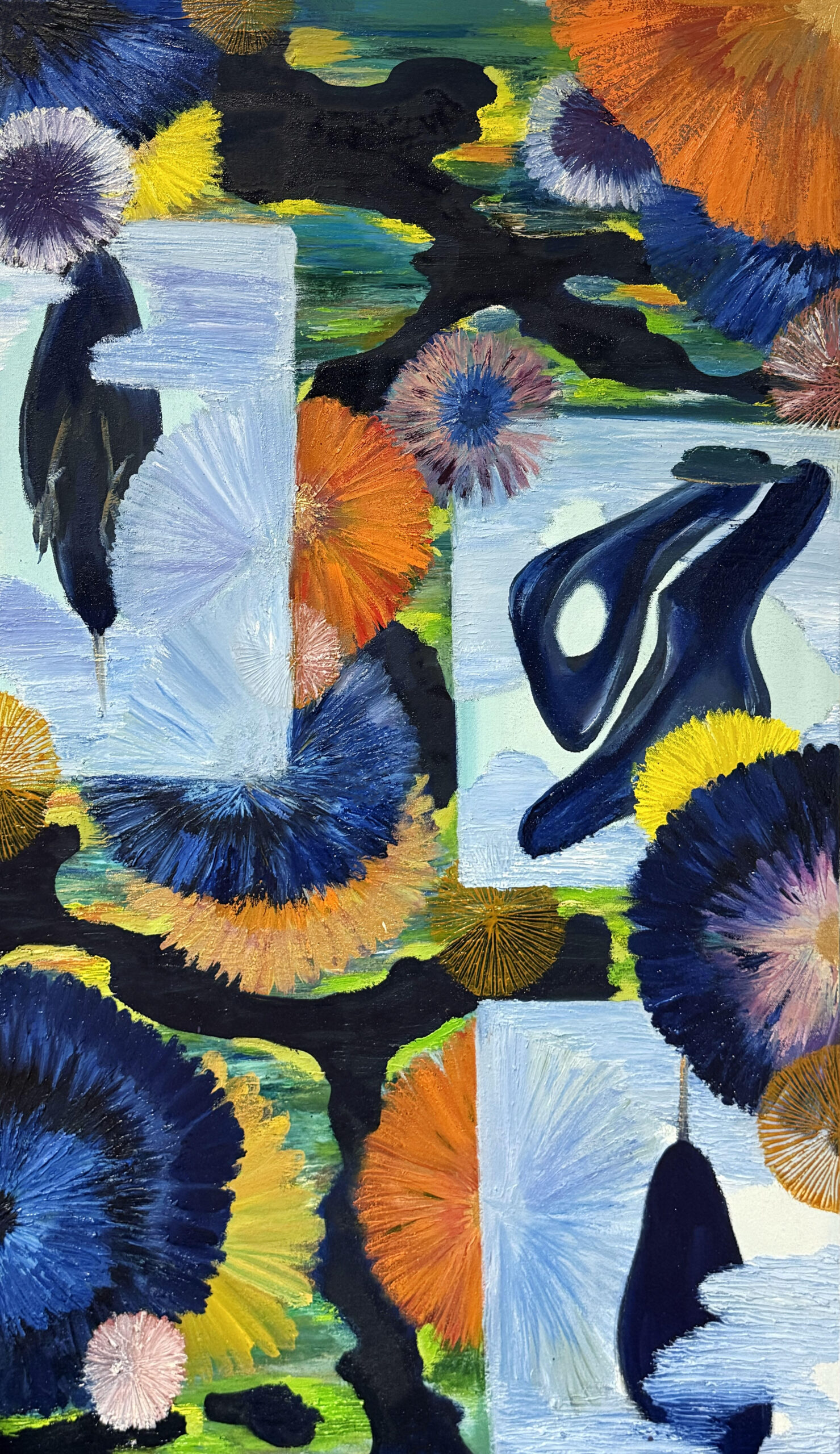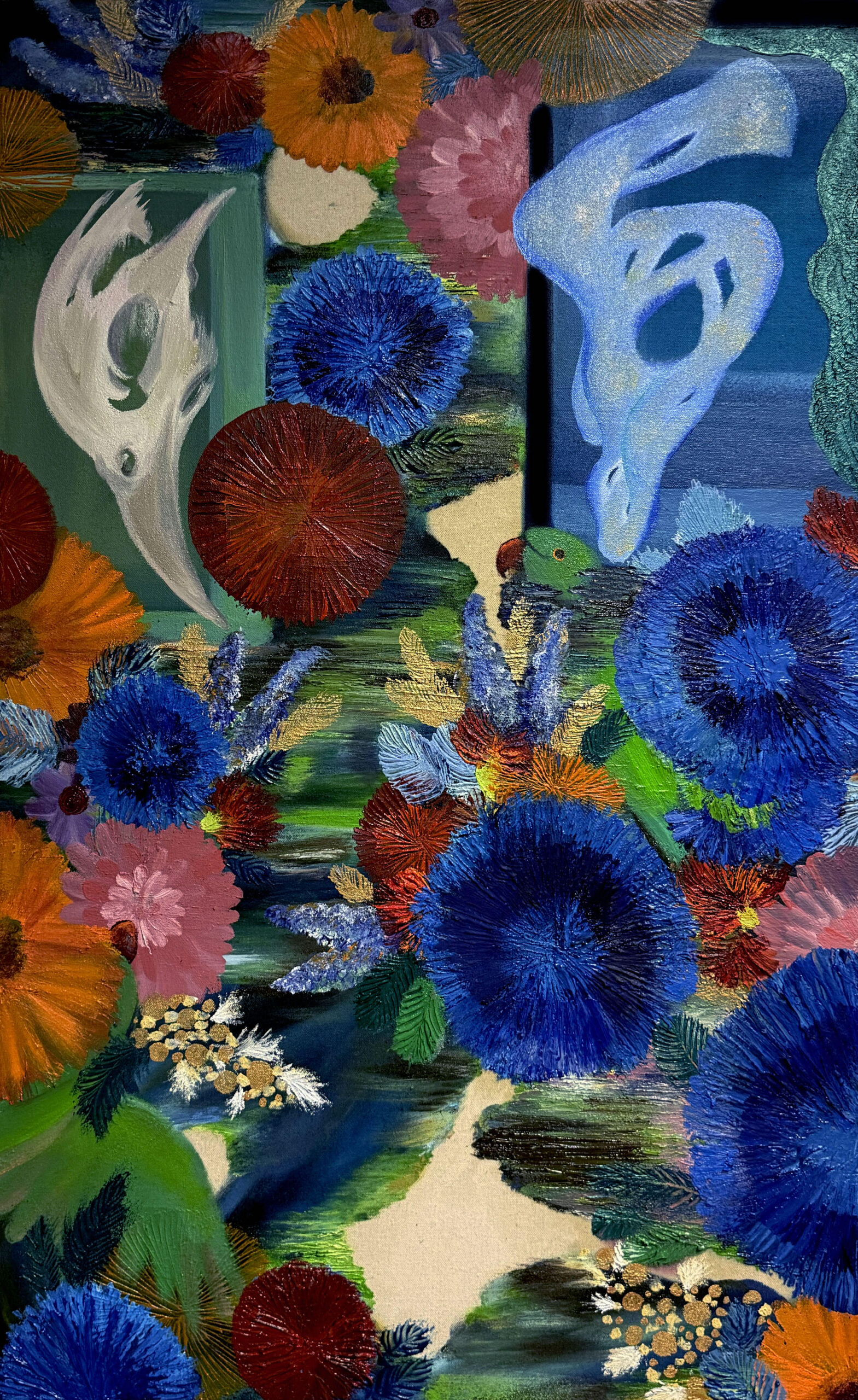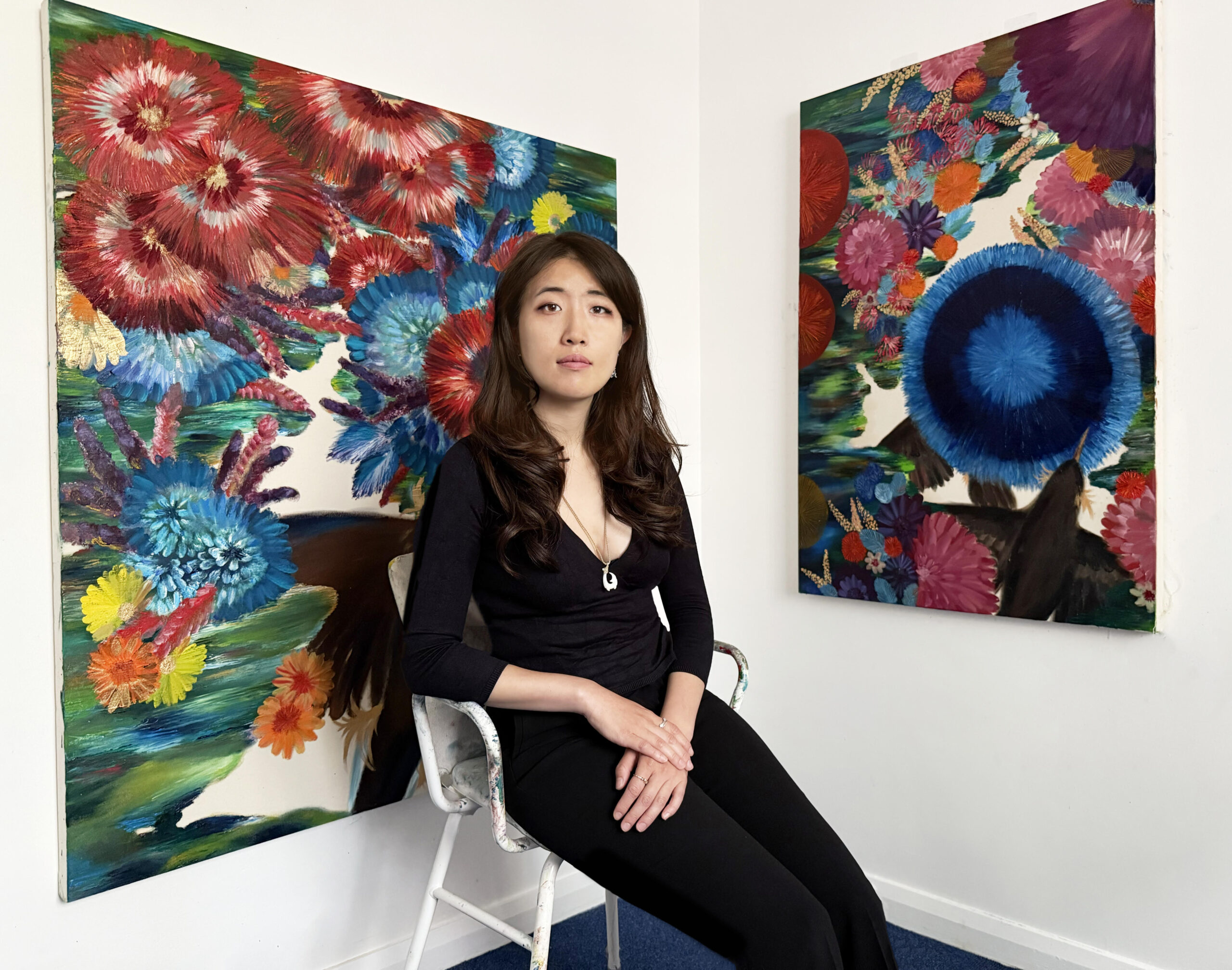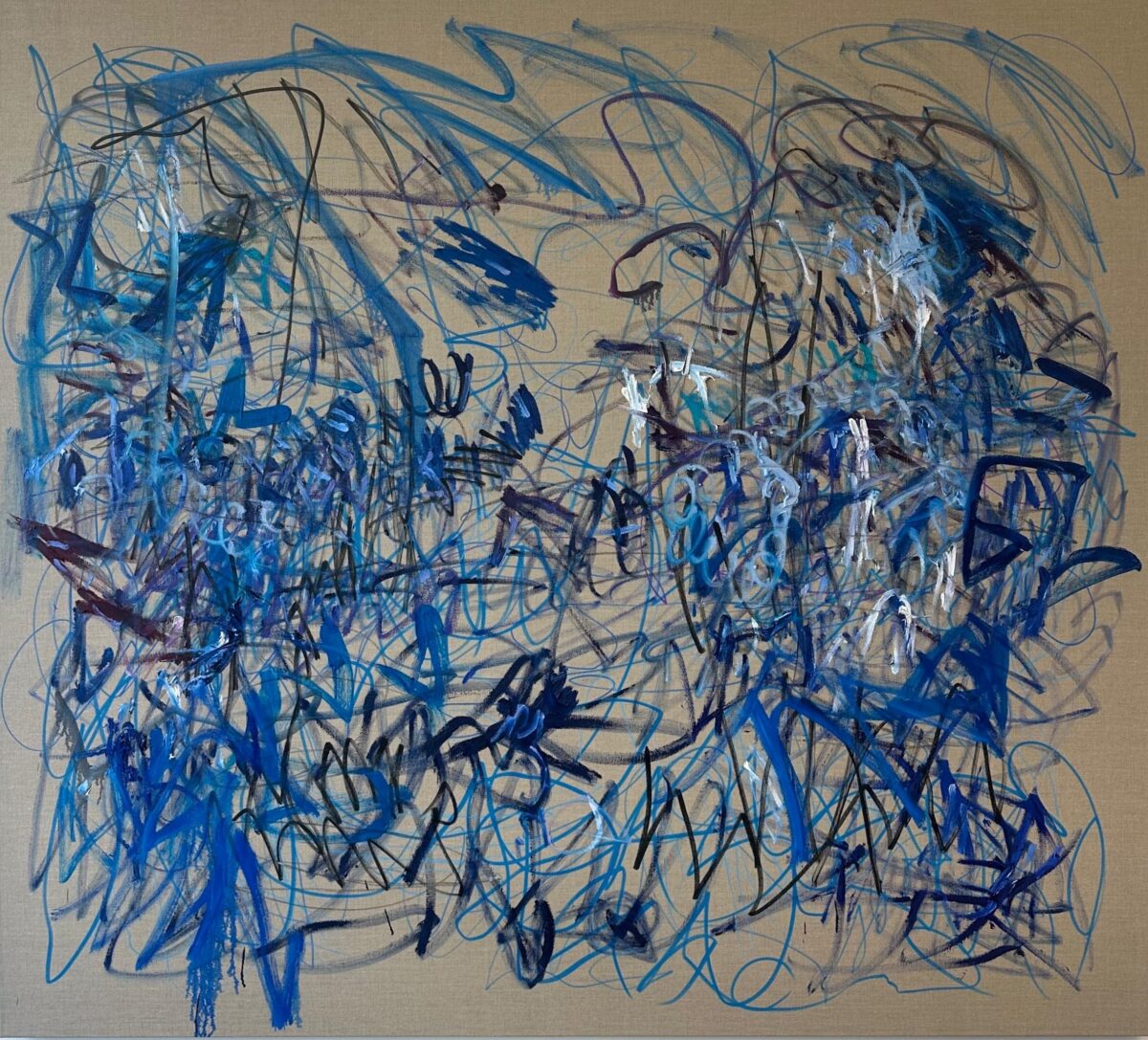Category Art
Published September 18, 2025

The Mirage Keeper (2025) - Oil and natural pigment on canvas, 100 cm x 60 cm, by Yula Kim
I am gazing at a painting by Yula Kim. Lush, brush-like flowers in vivid shades of blue, orange, yellow and purple bloom like islands on the canvas. Pools of smudged colour, reminiscent of Monet’s watery surfaces, shimmer beneath them. Three rectangular cards the colour of glaciers rest upon the flowers, not so much painted as suspended over the vibrant landscape. They feel like mirrors into their interior world. An inky river—or perhaps an ocean—wreathes its quiet way beneath every stroke of paint, almost but not quite the same hue as the abstract objects glimpsed through the glacial cards.
The Mirage Keeper (2025) is a painting that feels like a collage, layered with potential and illusion. Inspired by the form of the huia bird, its abstraction conjures a cacophony of images to the mind’s eye. Blink, and you might see something completely different. The oval object on one card might be a hanging fruit, a cocoon, or a sleeping bat’s wrapped form. Another appears at first to be a nest, but it could equally be a surreal rendition of a pear. Its exquisite symmetry belies the work’s underlying complexity.
A London-based artist, Yula’s work is deeply informed by her transnational heritage and her vitalist belief in the interconnectedness of all living beings. Her paintings contend with migration, but she herself resists being boxed into one geographical identity. ‘I feel more like a citizen of the world,’ she tells me. ‘Of course, everyone is different, but we’re also ultimately connected by our love for nature.’
Her art has been exhibited at the Tate Modern, the Royal Borough of Chelsea and Kensington Council’s Platinum Jubilee Collection, the Science Museum’s Communicating Time and Culture Project: Grand Yaji Gathering, and, during Charles III’s coronation concert, at Windsor Castle. Some of her works are currently held by the Heasung Art Bay Centre in Busan, and in the special collections at the Royal College of Art in London, where she completed an MA in Contemporary Art Practice.

Nocturne in the Blue Land (2025) - Oil and natural pigment on canvas, 100 cm x 80 cm, by Yula Kim
The Mirage Keeper (2025) is one of the artist’s rare few paintings that does not overtly depict birds, a central theme in her work. From alca tordas and eagles to the extinct Hawaiian ō‘ō and New Zealand huia, Yula considers avian forms to be powerful markers of ecology. ‘Their presence or absence tells us so much,’ she reflects. ‘For me, working with these animals becomes a way of speaking about fragility, disappearance, and the traces we leave behind.’
Birds appear as both figments and concrete subjects across Yula’s practice. With another MA in Museums and Galleries in Education from UCL under her belt, she has conducted fieldwork in natural history collections and collaborated with institutions worldwide. She often requests photographs of extinct bird taxidermies to use as references, later committing them to canvas in oil paints and natural pigments.
In Nocturne in the Blue Land (2025), awash in the same deep hues and startling profusion of flowers as The Mirage Keeper, huge ethereal shapes resembling avian skulls meet the viewer’s gaze. More prominent than the green parrot partly obscured by foliage, the skeletal apparitions lend an eeriness to an otherwise verdant scene. Small, cream-coloured patches pepper the canvas, reminiscent of the inky rivers in Mirage. These stark swathes of blank territory recur across Yula’s oeuvre, particularly in more recent works such as The Linear Perch (2025), Phantom Reverie (2024) and The One: A Vast Blue Bloom and the Birds Never Seen (2025). They evoke the way islands are marked on maps, tiny archipelagos adrift in her oceans of flora and fauna. On occasion, they emerge in the shadowy outline of a bird’s form. Wildlife is always Yula’s central subject; places, their peripheral vessels. Born in South Korea, she has also lived in China, Hawaii, Uganda, and the United Kingdom, drawing particular inspiration from Hawaii’s luminous landscapes and fragile ecosystems.

Yula Kim
‘I fell in love with the blues in Hawaii,’ she says. ‘Colours are your life. They represent the way you live.’ Blue recurs as a central force in her practice: from translucent washes that evoke ghostly forms or bone-like fragility, to the rich depths that capture the iridescence of plumage or petals. Yet, as exuberant as her colour palettes are, there is a soulful, melancholic undertone in Yula’s art. She contends with absence as much as presence. Neutral patches amid vibrant fields, shadowy bird-shaped voids, creaturely outlines that never fully appear: what is not painted carries just as much weight as what is.
Without being overt or didactic, environmental sustainability underpins her practice like a quiet tide. Yula Kim’s work contends with global flora and fauna, living subjects that embody resilience as much as transience. ‘When I depict endangered or extinct species in my paintings, it’s a way of asking how we might reimagine more-than-human coexistence in a world that’s becoming so rapidly urbanised,’ the artist notes. ‘It feels both like an act of mourning for what we’re losing, and a celebration of the diversity that remains.’
For more of Yula’s work, follow the artist on Instagram: @yurajoanrobinakim


